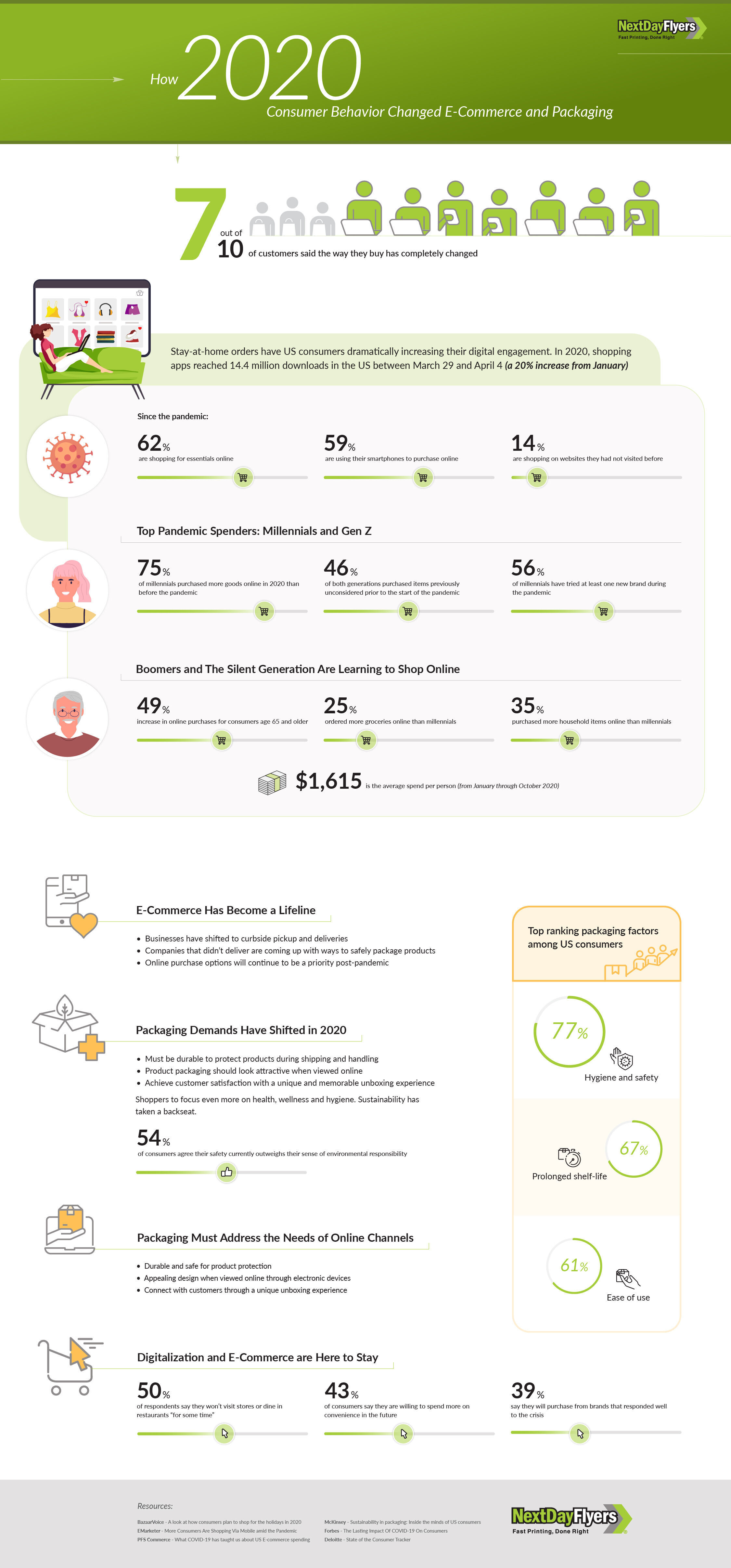How 2020 Consumer Behavior Changed E-Commerce and Packaging
The year 2020 has altered the world in more ways than we can imagine. From the way we work, travel, and spend our free time, coronavirus has affected every human across the globe, one way or another.
Measures taken to control the pandemic has brought about significant change in our lifestyles. Mandatory curfews and lockdowns, social distancing, and stay-at-home orders have forced businesses, institutions, and individuals to find new ways to carry on in a time of uncertainty.
One of the most apparent developments since the start of the pandemic is in the way consumer buying behavior has changed. In efforts to decrease the spread of the virus, people turned to technological devices and the internet for their needs. A study by Bazaarvoice shares that 62% of US consumers shop online more than ever before, with 59% of adults using their mobile phones to do so, according to EMarketer. E-commerce was already rising, but this new pandemic behavior has caused acceleration and made it the primary sales channel for millions of consumers. According to new data from IBM's U.S. Retail Index, the pandemic has advanced the shift away from physical stores to digital shopping by roughly five years.

Convenience, safety, and ease of price comparisons are cited as some of the main reasons to shop online.
Unsurprisingly, these online shoppers are led by Millennials (born between 1981 and 1996) and Generation Z (born between 1997 and 2015). A PFS Commerce study found that 46% of this demographic have made more online grocery purchases during the pandemic than before. Being more tech-savvy, the two younger generations naturally incorporate digital into their consumer behavior. Millennials, however, being in the peak age of income, are spending more than they did before coronavirus started; 75% have bought goods online that they had not considered before, and 56% have tried at least one new brand.
What’s unexpected is how quickly the older generations have also turned to online shopping. In 2020, there was a 49% increase in online purchases for consumers aged 65 and older. The Silent Generation (born between 1928 and 1945) and Baby Boomers (born between 1946 and 1964) have a $1,615 average spend from January through October 2020. Delivery app Instacart found that Boomers order online groceries 25% more times than Millennials.
The high demand for easy, flexible, and contactless purchasing has affected many businesses.
The restaurant industry, small retail shops, and other brick-and-mortars that rely on high foot traffic struggled to make ends meet. Thus, e-commerce has become a lifeline for many of them. The rise of all products and services available for online orders are pushing brands to change their business model and come up with strategies to keep customers engaged. This applies to multiple categories outside of food and essentials, like entertainment, sports, personal care, and home furnishing.
With accelerated online shopping and an apparent focus on health and hygiene, consumers' priorities on packaging have also changed.
A McKinsey survey revealed that US consumers rank packaging sustainability as relatively low as a buying criterion when buying products online. Price, quality, brand, and convenience are at the top, with hygiene and shelf life at a close second. This doesn’t mean that environmentally sustainable packaging is no longer important; it has merely taken a back seat because of consumers’ heightened sensitivity towards safety.
More than the basic customer priorities, including health and hygiene, packaging manufacturers and businesses must also address the needs of the online channel.
It’s tricky, but brands in e-commerce must focus on long-term packaging solutions to stay relevant.
Flexible packaging for a wide variety of products. Besides clothing, accessories, and electronics, we’ve seen high volumes of food, sports equipment, and personal care products being delivered. This is prompting demand for durable packaging that can protect goods during shipment.
Packaging design that appeals online. Before the pandemic, brands can stand out from store shelves by engaging all senses. The e-commerce boom is pushing us to reconsider packaging designs that will attract shoppers when viewed on a tablet or smartphone screen.
Custom packaging that improves the customer experience. In-store visits are limited, and it will be a long time before shoppers are comfortable going back to brick-and-mortar. This creates an opportunity for brands to leverage the power of unboxing and connect with customers in their own homes. This is the last step in their buying experience, so make sure to communicate the value of your brand by going beyond the standard mailer or shipping box.
What’s in the future of e-commerce and packaging?
The coronavirus pandemic will have lasting effects on the retail landscape. Even after restrictions ease and the majority of our population have been vaccinated, nearly 50% of people say they won’t visit stores “for some time” or “for a long time”, according to a survey by Global Web Index. Out of the respondents, are willing to pay more for convenience in the future, and 39% say they will purchase more in the future from brands that responded well to the crisis.
For businesses in any industry, it’s important to create a sustainable business model as early as now that will appeal to the evolved consumer behavior in the post-pandemic era and beyond.

